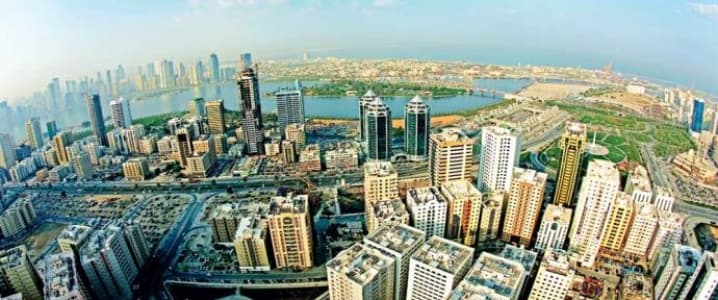In early January Sheikh Mohammed bin Rashid Al Maktoum, vice-president and prime minister of the UAE and ruler of Dubai, unveiled the UAE Energy Plan 2050, which aims to increase clean energy usage by 50% and improve energy efficiency by 40%.
Moves to boost the use of renewable sources, nuclear power and clean fossil fuels in power generation will be funded by a federal government investment of Dh600bn ($163.4bn) over the next 33 years, equating to an annual spend of more than Dh17bn ($4.6bn). This is expected to translate to a 70% reduction in carbon dioxide emissions and savings worth Dh700bn ($190.6bn).
More than 90% of the UAE’s energy demands are currently met by natural gas. Under the UAE Energy Plan 2050 the contribution of gas will be reduced to 38%, while that of clean fossil fuels, nuclear and renewable energy will be raised to 12%, 6% and 44%, respectively, by 2050.
High potential
As the third-largest emirate in the country, Sharjah is expected to contribute substantially to these targets, particularly in terms of enhancing energy efficiency.
By fully converting Sharjah’s power plants to combined-cycle generation technology – which is currently used in stations in Dubai, Abu Dhabi and Fujairah – the emirate should be able to increase its production efficiency by up to 50% and reduce carbon dioxide emission by 33%, according to estimates from the Sharjah National Oil Corporation (SNOC).
Sharjah has already taken steps in this direction. In May the Sharjah Electricity and Water Authority (SEWA) began the process of evaluating bids to expand and convert its single-cycle Hamriyah power plant to a more efficient combined-cycle facility, according to local media. The expansion is expected to increase the plant’s capacity from 500 MW to between 1 GW and 1.5 GW.
With 2220 KWh per sq metre per year of irradiance, Sharjah is also well positioned to develop solar energy facilities. According to the Sharjah Investment and Development Authority, also known as Shurooq, the emirate’s market potential for public and private investments in renewable projects is forecast to reach Dh1.13bn ($307.7bn) by 2020, with opportunities including solar thermal energy plants for water desalination, solar energy generation plants and solar-powered public lighting.
Overcoming obstacles
One of the emirate’s main challenges in energy provision is its dependence on imports. A sizeable amount of Sharjah’s energy needs are currently imported in the form of electricity directly from Abu Dhabi, representing around 30% of Sharjah’s total consumption during summer and more than 50% in the colder months, when demand decreases. SEWA uses natural gas to generate the rest. Related: Saudis Raise March Crude Prices For All Customers
SEWA sources half of the gas it needs during winter from local producers SNOC and Dana Gas, importing the rest from Abu Dhabi-based gas development and transportation initiative Dolphin Energy, which brings in gas from Qatar. During the warmest months of the year, SNOC and Dana Gas meet between 15% and 20% of Sharjah’s gas demand.
The latter company came on-stream as a Sharjah-based gas supplier in February last year, when the company began production at the Zora gas field located in the Sharjah western offshore concession block.
“Sharjah has historically had limited indigenous energy resources, so the addition of the Zora gas field in early 2016 was a welcome contribution to local production,” Patrick Allman-Ward, CEO of Dana Gas, told OBG.
A memorandum of understanding (MoU) signed by SNOC and German energy company Uniper in mid-October is expected to provide a more reliable supply of natural gas to meet growing energy demands in both Sharjah and further afield.
ADVERTISEMENT
“Sharjah has been working towards self-sufficiency for a long time. However, the recent MoU signed with Uniper to import liquefied natural gas [LNG] will satisfy the emirate’s needs and potentially those of other northern emirates,” Hatem Al Mosa, CEO of SNOC, told OBG.
Under the terms of the agreement, LNG will be imported through Hamriyah Port, with the first delivery expected in the spring of 2018. The gas will then flow to Sharjah’s Sajaa gas field complex before continuing to the existing pipeline network that spreads across the five northern emirates.
More Top Reads From Oilprice.com:
- Is Iran Planning On Breaking Its OPEC Pledge?
- Research Warns Cheap Solar Will Dampen Oil, Coal Demand
- Has Big Oil Bought Into The Oil Price Recovery?


















